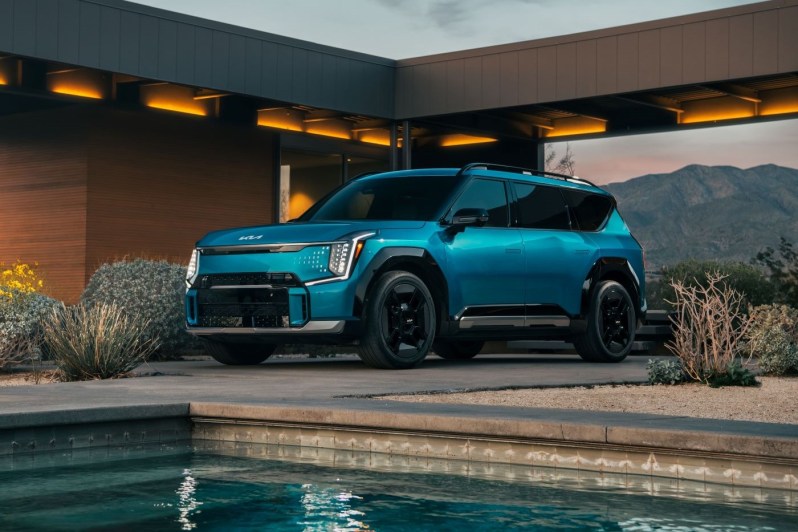
Earlier this year, Kia unveiled the all-electric Kia EV9. It’s a three-row midsize electric SUV with level 3 autonomous tech and up to 379 hp produced by dual motors. The Kia EV9 also comes with a 99.8 kWh battery that is estimated to deliver a range of up to 300 miles — that’s if you purchase the all-wheel drive or the rear-wheel drive long-range option. On the other hand, the standard model is available with a smaller 76.1 kWh battery, which can cover up to 223 miles of range.
Another cool thing about the 2024 Kia EV9 is that it looks like the Kia Telluride, except that it’s slightly longer and the bumper design is different. Because it’s a Kia EV with no engine, it offers more interior space than the Kia Telluride. Better yet, the all-wheel drive Kia EV9 is faster and more powerful than the Telluride X-Line with a V6 engine. However, the Kia EV9 has a towing capacity of 5,000 pounds, which is 500 pounds less than the Kia Telluride.
What about the Kia EV9 price? According to Kia, the standard EV9 model available with a 76.1 kWh battery will start at $54,900 without the destination fee of $1,495. But if you want the RWD Kia electric car option with a range of up to 300 miles, it will cost you $59,200. Beyond that, the EV9 Wind e-AWD models start at $63,900, and the Land e-AWD model goes for $69,900.

Kia is also working on a high-performance AWD EV9 GT-Line model that is scheduled to hit the market in 2025. The EV9 GT model is expected to deliver up to 576 hp, similar to the Kia EV6 GT. It will also be the most expensive model in the EV9 lineup, with a price tag of $73,900.
The order book for the Kia EV9 is currently open, and you can reserve it by paying a refundable fee of $750 at the nearest Kia dealership. Once you’ve booked it, you can expect to be first on the line when delivery starts before the end of the year.
However, the 2024 Kia EV9 won’t be eligible for the EV tax credit until 2024, when Kia starts manufacturing it in the U.S. Until then, Kia will import the EV9 from South Korea. Well, it would be better to wait until it qualifies for the EV tax credit if you want to save money on the purchase price. Kia also announced it will expand its EV lineup by introducing 15 new models by 2027.



